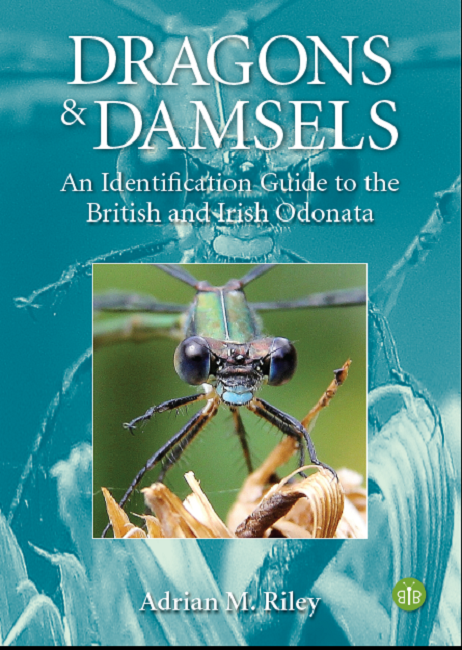Adrian M. Riley
Brambleby Books
2020
ISBN: 9781908241641
Reviewed by Richard Harrington
The unique selling point of this excellent guide is that it is totally geared to making identification as easy as possible. It achieves this through a rather clever layout.The only other book on British and Irish dragonflies and damselflies on my shelf weighs in at 142 pages. Adrian Riley’s is more than 100 pages longer, and that’s a clue. Each species appears at least twice. After an introduction, instructions on how to make best use of the book, a systematic checklist of all species and forms, and a guide to anatomical features needed for identification, the main chapters begin.
Chapter 1 describes, for each of the 18 resident damselfly species, the flight period, distribution and status, habitat preferences, morphology (for each sex, and for immatures where they are distinct from adults), species with which it might be confused, behaviour, and tips for finding and photographing. There are pictures of each species and its habitat. This chapter is arranged systematically, genus by genus (families are never mentioned). Now comes the clever bit. Chapter 2 goes through them all again, but this time they are divided into 13 groups, each group being defined by the most obvious anatomical feature – for example: Damselfly Group 3 – Abdomen metallic bronze-green with blue ‘tail’.
Within each group, the differences between each species and those with which it could most easily be confused are described in detail. For some species, the males, females and immatures are not in the same group. This is the genius of the book, the identification guide is arranged by appearance, not taxonomic position. Chapters 3 and 4 repeat this system for the 23 resident dragonflies. Chapter 5 describes five annual visitors which, the author thinks, might become permanently established residents. Chapter 6 gives brief accounts of 11 scarce visitors and two extinct residents. The appendices show the vice-counties of Britain and Ireland, which are referred to throughout the main chapters, and provide references and suggestions for further reading.
I have not seen an identification guide quite like this before and I like it very much. I can’t wait to get out and try it – but I am writing this is April 2020, so it may be a while!


